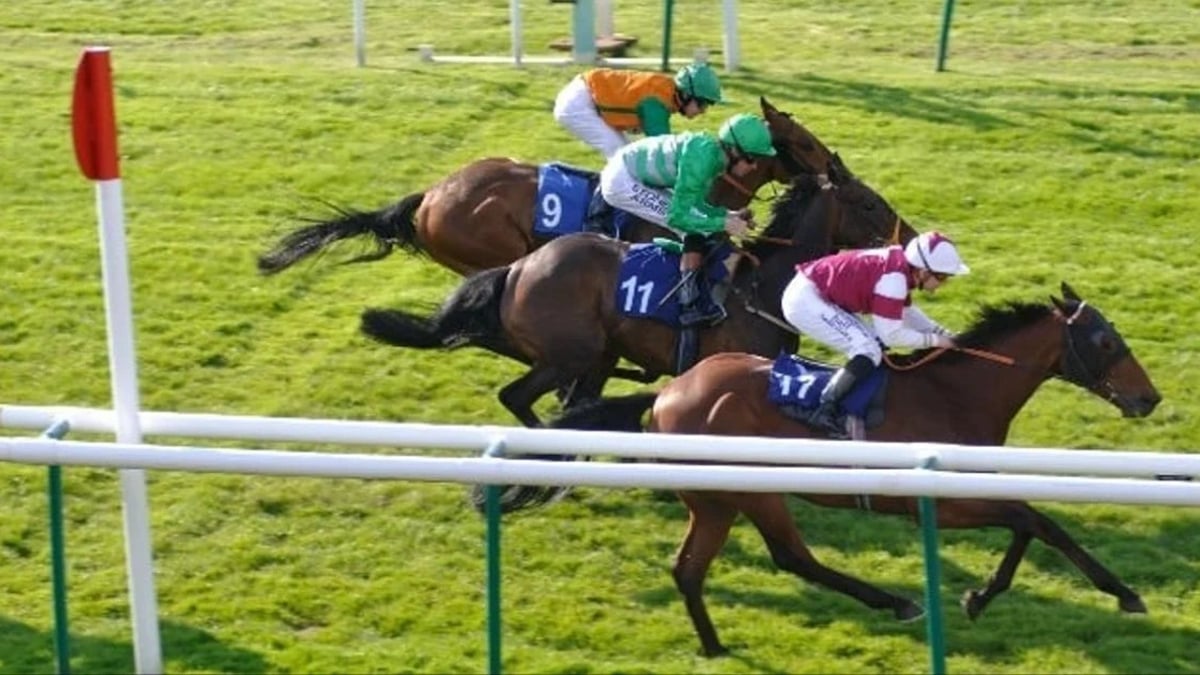How to Integrate Tricast and Forecast Bets into Horse Betting Strategy

Tricast and forecast bets are popular with racing betting enthusiasts. In this betting guide, we’ll explain how these bet types work and how to use them.
Note: Odds in this article use fractional format (e.g., 10/1). Depending on your region or sportsbook, they may appear in decimal (11.00) or American (+1000) format. All examples use British pounds (£), but the same betting principles apply in other currencies.
- #ad. 18+. Gamble Responsibly. Gambleaware.org. Must be 21+ and present in OH. Gambling Problem? Call 1-800-GAMBLER
Tricast and Forecast Bets, Explained
Both types of bets involve attempting to predict the correct finishing order of race participants. These bets are mainly offered on horse and greyhound racing, but can sometimes be placed on motorsports or cycling, and even for outright betting markets in sports like football (soccer).
- Forecast: Pick the two horses to finish first and second in a race. With a straight forecast, the bettor must predict the correct finishing order.
- Tricast: Predict the horses that will finish first, second, and third in a race. In a straight tricast, all three selections must finish in the order the player predicts when placing the bet.
You can attempt to predict the result in its straight order (e.g., Horse A to come in first, Horse B to come in second, and Horse C to come in third), or alternatively pick the first two or three horses to finish in any order with different types of tricast and forecast bets.
Winning a tricast is difficult, and that is reflected in longer betting odds.
While not quite as tricky as the straight tricast, forecasts are still extremely tricky to win. The size of the field is a key consideration and will impact the forecast betting odds. A forecast bet becomes much more winnable if there are fewer runners.
Any chases with big fields will give you long forecast odds. You'll find it far more difficult if there are many runners in a race, but you will get a bigger potential payout.
Tricast and Forecast Payouts
Due to the relatively complex nature of tricast and forecast bets, payouts can often be quite large, with bettors potentially reaping sizeable returns from relatively small stakes.
Forecast and tricast bets are popular because of the potentially huge profits one could gain from a winning bet. If, for example, the first two or three horses in a race have long odds, the return to the pound is likely to be a three-figure sum, or even larger.
How to Calculate Tricast & Forecast Payouts
Most horse racing betting sites have handy bet calculators that display the potential winnings from your stake alongside your online betting slip. Tricast and forecast bet returns are worked out by a computer calculation system, considering the number of runners and their starting prices.
Are Tricast Bet Payouts Better Than Forecast Payouts?
Tricast bets will generally pay out better than forecasts as more selections are involved. However, this is not always the case, as it all depends on the odds.
If you combine the three runners with the lowest odds in a race in a tricast, the potential payout can be less than it would be if you combined two long-shots in a forecast. This principle applies to any multiple bet you place at the best betting sites.
Example
The 2019 Mares' Novices Hurdle at Cheltenham is a good example of this market's profitability. A large number of runners and the open nature of the race meant that prices were high, and predictably, the forecast and tricast returns were huge.
Eglantine Du Seuil, a 50/1 shot, edged out her 66/1 stablemate Concertista by a short head in a hard-fought finish, with the Gordon Elliott-trained 40/1 outsider Tintangle taking third. The result delivered a huge £73,711.25 payout on the tricast.
Alternate Tricast & Forecast Bets: Combinations
What is a Combination Tricast?
In a combination tricast bet, the bettor picks three or more runners they believe will finish in the top three. A combination tricast bet with three selections has six bets, which means this type of accumulator will cost you six times your stake.
The key difference from a straight tricast is that the selections can be placed in any order, and the bet can still win. In that way, it is an easier bet to win than a straight tricast.
Here's an example:
- Bet 1: 1st Minella Indo 2nd A Plus Tard 3rd Al Boum Photo
- Bet 2: 1st Minella Indo 2nd Al Boum Photo 3rd A Plus Tard
- Bet 3: 1st A Plus Tard 2nd Minella Indo 3rd Al Boum Photo
- Bet 4: 1st A Plus Tard 2nd Al Boum Photo 3rd Minella Indo
- Bet 5: 1st Al Boum Photo 2nd Minella Indo 3rd Al A Plus Tard
- Bet 6: 1st Al Boum Photo 2nd A Plus Tard 3rd Minella Indo
Combination Forecast Bets
A combination forecast bet is a little more complex. With this bet type, you are betting that any combination of three or more selections will finish in the top two. Your chances of landing a winning combination are far better, but your stake will be spread across many bets, so the cost of each bet will be higher.
You will place six bets if you make three selections in a combination forecast. Here's an example:
- Bet 1: 1st Minella Indo 2nd A Plus Tard
- Bet 2: 1st Minella Indo 2nd Al Boum Photo
- Bet 3: 1st A Plus Tard 2nd Minella Indo
- Bet 4: 1st A Plus Tard 2nd Al Boum Photo
- Bet 5: 1st Al Boum Photo 2nd Minella Indo
- Bet 6: 1st Al Boum Photo 2nd A Plus Tard
As you add more selections to your bet, the number of bets will multiply. For example, four selections would equal 12 bets, five would equal 20 bets, and six would equal 30 bets.
How to Calculate Combination Tricast & Forecast Stakes
There is a simple formula for working out your stake for combination bets.
- With forecasts, you take the number of horses you wish to select and multiply it by one less than the number of selections.
- With tricast bets, multiply the number of selections by one less than the number of selections, then multiply that by one less than the previous figure.
For example, if you want to make a combination tricast using four horses, you will multiply 4 x 3 x 2, which equals 24 bets. You then multiply this by your stake, e.g., £1 for a four-selection tricast comes to £24 in total.
Reverse Forecast Bets
A reverse forecast bet involves the bettor predicting the two runners coming first and second in a race. Unlike a straight forecast, they can finish in any order, and the bet will be successful. This multiple bet costs double your stake, equivalent to placing two straight forecast bets.
The reverse forecast is far easier to get right than a straight forecast, but the downside is that you have to stake more money.
Final Tips for Tricast and Forecast Betting
- Be patient with forecast and tricast bets. You might not find success straight away, but if that win comes in, you may well walk away with a tidy sum.
- You must always know how many bets you place within your tricast or forecast bet and, therefore, how many chances you have to win.
- Examine the size of the field, as this will obviously have a major impact on the number of possible winning combinations.
- Consider each horse’s prices, form, and jockeys.
You can use several tools to help you work out all of this, with many different betting odds calculators available online. If you consider all those factors and find that there is little to separate multiple runners, a forecast or tricast bet could be a great option.














